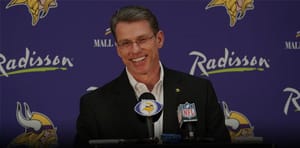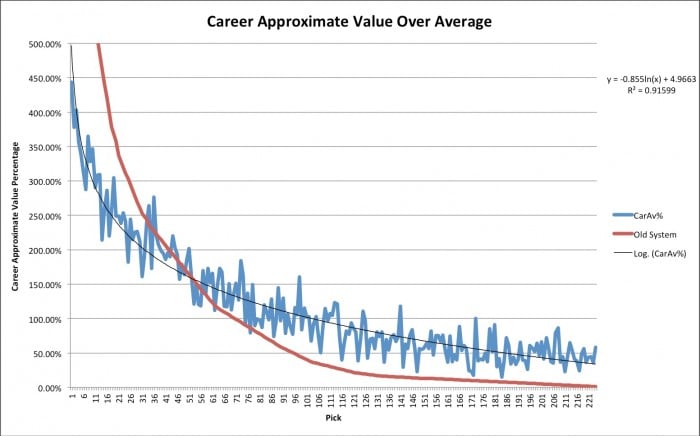2015 Minnesota Vikings: Buyers Market for the 11th Pick

Vikings general manager Rick Spielman was beyond aggressive in selling the 11th overall pick in the draft to other teams in a presser he held today to discuss Minnesota’s plan for the NFL draft.
With a weak commitment to actually selecting a player at the 11th pick, Spielman largely talked about the favorable market for the 11th pick in a number of ways.
“The 11th pick is very appealing as a potential trade spot,” Spielman remarked. “The 5th-year option decreases dramatically after the first ten picks.”
The Comprehensive Bargaining Agreement, ratified between the NFL and NFLPA in 2011, spells out fifth-year player option prices for the first round of the draft. Picks 1-10 (like Matt Kalil) will receive the franchise tag amount for their position if their fifth-year option is picked up—a one-year payout equaling the average salary for the top-ten highest paid players at their position.
After that tenth pick, the fifth-year option only costs teams the average of the third- through 25th-highest paid players at the position.
“I’m looking forward to moving out of that pick if possible. I don’t see us moving up.”
At the same time, he didn’t rule out picking at that spot. “I just went through five scenarios this morning. What if this offensive lineman falls, what if this edge rusher falls,” a possibility he later in the same presser half-heartedly mentioned as an option.
“There’s not much difference between the 7th or 8th guy and the 20th player.”
Although he said that in the context of making it easy to fill needs, it could also speak to the feeling he has, in general, about the kind of value the 11th pick holds for him. He also said, “If you have three or four options [meaning players on the same tier], you can move down and get your guy.”
Given his stated goal of picking up ten picks in every draft, it makes sense for Spielman to trade down from that pick in order to generate as much value as possible. It’s harder to grab ten picks when you move a third-round pick to do it instead of a first-round pick.
“The more people you can get in the boat, the better.”
Also playing a role in the discussion are the concept of analytics—a word thrown around perhaps 20 times in the presser, each time with a different meaning. In this context, Spielman’s discussion of their statistical work on the draft’s “sweet spots” in terms of generating player value over perceived pick value, may play a role.
That kind of analysis may draw upon or be similar to work done by Pro-Football-Reference and the Harvard Sports Analysis Collective, looking at the historical value of different picks.
Though that data is more linearized and therefore not great for evaluating individual picks, it could be similar to the kind of work Rick Spielman and his group are doing.
Once again, Spielman told fans not to pay too much attention to mock drafts, though this time in not so many words. “Everybody’s targeting this guy or that guy… we’re wide open.”
The potential fits for that pick are many. With three receivers generally seen as top-tier players at their position, and two expected to be gone by the time the Vikings pick (Amari Cooper and Kevin White), either the San Francisco 49ers or the Miami Dolphins may be willing to trade up to secure that last receiver before talent drops off at the position.
If the New Orleans Saints want to get the last of the edge rushers before a run on the position makes it difficult to grab the one they want where they’re at, the Vikings may be willing to trade down to 13.
Alternatively, trading down one spot to the Browns in order for them to select Danny Shelton is always an option.
If nothing else, be more prepared to see the trade sign flashing on your draft broadcast of choice than seeing an actual pick made by the Minnesota Vikings.


You must be logged in to post a comment.